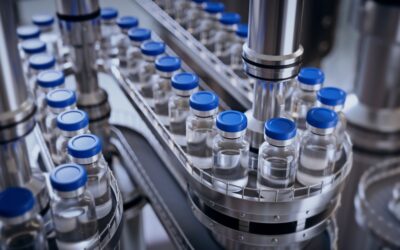
In every human being flow up to five litres of blood, which consists of three different types of blood components resulting from its fractionation: 44% red blood cells, 1% white blood cells and platelets, and the remaining 55% of plasma.
Each haemocomponent is fractionated to correct a specific defect, for example the transfusion of red blood cells is primarily aimed to re-establish the correct transport of oxygen from the lungs to the tissues in anaemic patients or patients recovering from traumatic events, accidents or surgery.
The multitude of vital functions that blood performs makes it of fundamental importance to the human being, especially thanks to the haemocomponents and plasma derivatives that it contains. Just think that every year, through blood fractionation, almost three million transfusions are carried out in Italy, saving and improving the quality of life of more than 600,000 people.
How is blood stored
The blood collected from donors is stored inside special sterile PVC bags. The collected blood is transferred to the blood component fractionation area and processed through a mechanical centrifuge of the whole blood bag which separates the different components via gravity into three levels.
Subsequently, automatic machines with optical sensors handle the mechanical squeezing action to pass the separated blood components from the original bag to the connected satellite bags.
Finally, each concentrate will be assigned a different storage method. Red blood cells, for example, are stored in special refrigerators at a temperature between +2°C and +6°C for up to 42 days or frozen at -60°C for years.
The importance of a sterile bag
Method, care and precision are the three watchwords.
The collection, the separation and the storage of blood is a particularly complex and delicate process.
It is vitally important that the whole process is carried out with the utmost care and precision, evaluating all the legal parameters necessary to consider a donation that can be transferred.
It is therefore evident how essential it is to maintain the correct sterility of the bags, since these are components that will be inoculated in patients intravenously.
LAST Technology’s commitment
The TS-AS autoclaves represent the engineering commitment to ensure the pasteurization, the inactivation and the terminal sterilization of liquids in closed containers such as PVC bags or flasks for blood collection and blood derivatives.
Thanks to the machine’s integrated fan system, excellent heat distribution in the form of air + steam is ensured throughout the pasteurization, inactivation and sterilization phase. This ensures the integrity of the bags and flasks at the end of each cycle, without any deformation or breakage.
At the end of the drying phase, the product is ready for inspection, labelling and packaging.
If you are interested in receiving more information and technical data, please consult the data sheet: click here.


